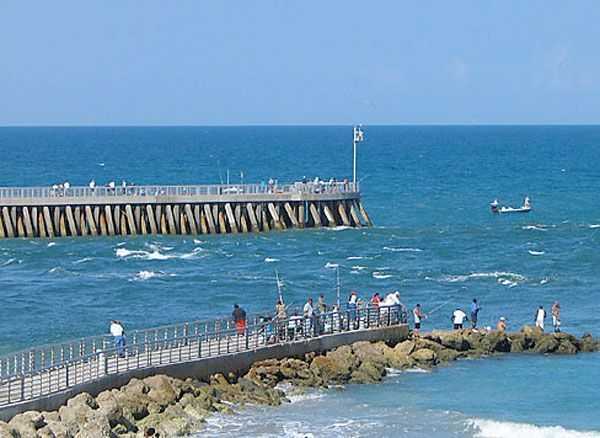Many anglers who fish the Jetties on a regular basis catch lots of good fish. When fishing the rocks with bait one never knows what they are going to catch. Successful jetty fishing requires knowledge on where, when and how to fish around the rocks. There is more to it than most people think about before packing their gear on the boat. Water clarity, wind direction, wind speed and, what I think are most important; tide movement and direction. If a person wants to have success fishing the jetties and they typically fish more often in the bays, I suggest they hire a full-time guide that knows how to fish around the rocks. Proper tackle selection is very important; firstly, because you can hook-up with any type of fish and secondly, many of the fish you catch are very large. If you take the wrong fishing gear to the jetties you are going to be highly disappointed. You will most likely spend all your time re-rigging your tackle on damaged reels and broken rods.
When fishing the Jetties, I use a 7’ medium to heavy action fiberglass rod and a reel that will hold at least a 100 yards of 20 lb. test. If you’re not fishing with a guide, don’t forget to take lots of hooks, weights and plenty of bait; you will need them! Rule #1: If you want to catch big fish, you will need to use heavy tackle. Another sure-fire technique for catching big trout is to free-line live shrimp against the rocks.
Fishing at the end of the Jetties can be very interesting and challenging. When the bite is on, anxious anglers will make their way down the jetties on foot or by boat for an opportunity to catch big fish. It’s not uncommon to see 20 to 30 boats stacked up within spitting distance of one another casting toward the rocks as the bait bucket-perched land anglers cast out from the rocks towards the boats. The competition around the rocks can become very intense on crowded days and the variety of inshore and offshore species that hover at the end of the jetties means you never know what might be caught. Two years ago I saw a man catch a nine-foot Lemon Shark. Another time, a boat full of anglers fought for 45 minutes to land a stingray that was wider than the bow of the boat! It’s a safe bet that in the late summer you’ll see tarpon rolling on the surface at the end of most jetties on the Texas Gulf Coast. Just the mention of Tarpon sightings at the local bait stand or convenience store inspire some anglers to re-launch their boats and head back out just to make a few casts in hopes of a big catch.
My final tip about fishing the jetties is that if you are fishing one way and not getting results, mix it up and try something different. Be patient; it may take you several fishing trips to the jetties to learn to catch fish consistently. One thing is for sure… the fish are always going to be near the rocks as they travel through the jetties in and out of the bays and trial and error is what it takes to become a better “Jetty Jerker.”
[easy-social-share]
